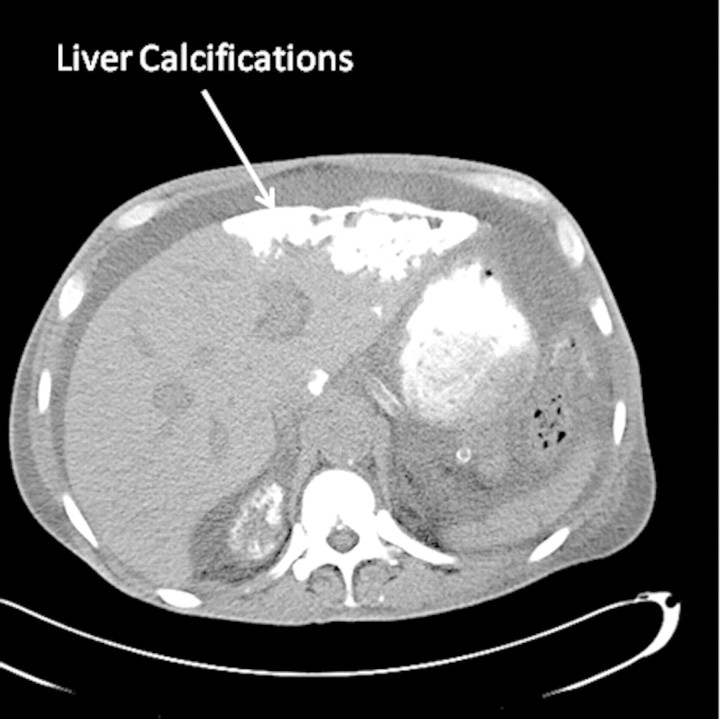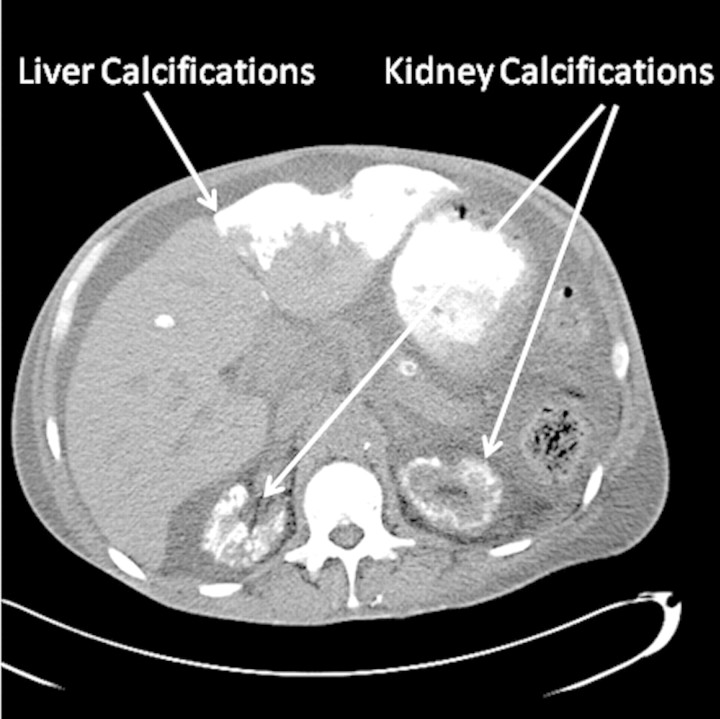Calciphylaxis is an entity that manifests in patients with end-stage renal disease. Also known as calcific uraemic arteriolopathy, it is associated with calcium deposits and the appearance of necrotic lesions in the skin and blood vessels. Of unclear pathogenesis, it can present with hypercalcaemia, hyperphosphataemia and secondary hyperparathyroidism. Vascular calcification is its histological footprint on biopsy. We report an unusual case of liver calcification in a patient with calciphylaxis.
The patient is a 48-year-old African American male with a history of end-stage renal disease on haemodialysis for 6 years secondary to hypertension. He came to the emergency room complaining of increased abdominal girth for the last month associated with increased penile oedema and pain. He had never travelled outside the United States. Physical exam revealed a blood pressure 110/80 mmHg, pulse 81 and respiratory rate 18; temperature 97 F, hepatomegaly and a penile ulcer of 1 cm diameter were present (necrotic centre). The biopsy of the penile ulcer was compatible with calciphylaxis (calcifications of small blood vessels, no findings suggestive of vasculitis). The patient had signs of liver failure with low albumin, increased PT and increased bilirubin. CT scan of the abdomen showed calcification of some areas of the liver and other intraabdominal organs (Figures 1 and 2). The patient died 1 week later from septic shock. Autopsy was not authorized by the family.
Fig. 1.
CT of the Abdomen with PO Contrast. Arrow shows Liver calcifications.
Fig. 2.
CT of the Abdomen with PO Contrast. Arrows show Liver and kidney calcifications.
Calcium deposits in the kidneys, stomach, heart and lungs have been described previously in this entity. Patients can present with systemic involvement to the lung and acute respiratory failure also described in the literature as ‘pulmonary calciphylaxis’. Our patient presented with liver failure and was found to have extensive calcification of the liver. This is the first reported case of liver calcification ‘liver calciphylaxis’ in a patient with calciphylaxis complicated by hepatic insufficiency. We suggest that vascular calcifications are just one part of the spectrum of calciphylaxis, and that any organ of the anatomy can be affected. Despite the treatment, the mortality is very high.
Conflict of interest statement. None declared.




